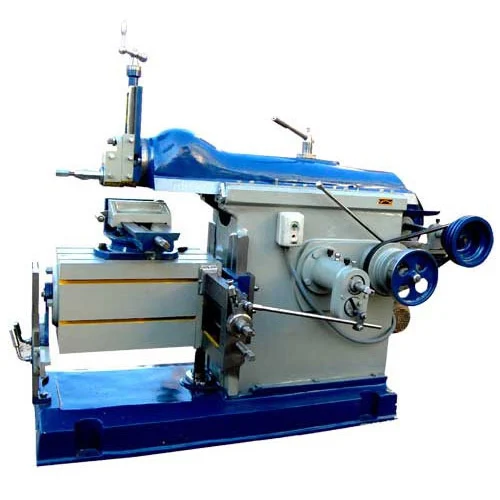
1. Introduction
Shaper machines are mechanical devices used in the manufacturing industry for cutting and shaping metal or other materials into desired forms. Using a linear reciprocating motion, these machines offer a straightforward way to create flat surfaces, slots, and keyways.
2. Working Principle
The shaper machine works on the quick return mechanism principle. Here's how it functions:
-
A single-point cutting tool is mounted on a ram, which moves back and forth in a straight line.
-
During the forward stroke, the tool cuts into the material.
-
On the return stroke, the tool lifts slightly to avoid dragging across the surface.
-
The movement is typically powered by a crank and slotted link mechanism.
3. Main Parts of a Shaper Machine
-
Base – Supports the entire machine and absorbs vibrations.
-
Column – Mounted on the base, contains the drive mechanisms.
-
Ram – Reciprocates and carries the tool head.
-
Tool Head – Holds and adjusts the cutting tool.
-
Work Table – Holds the workpiece and can be adjusted vertically and horizontally.
-
Cross Rail – Provides support and allows for vertical movement of the table.
-
Clapper Box – Allows the tool to lift during the return stroke.
4. Types of Shaper Machines
-
Crank Type Shaper – Most common; uses a crank mechanism for ram movement.
-
Geared Type Shaper – Uses a gear arrangement instead of a crank.
-
Hydraulic Shaper – Ram movement is powered by hydraulic fluid pressure.
-
Horizontal Shaper – The tool moves in a horizontal plane.
-
Vertical Shaper (Slotter) – Tool moves vertically, often used for slotting.
5. Applications
Shapers are mainly used for:
-
Machining flat and angular surfaces
-
Cutting keyways and grooves
-
Creating T-slots in machine tables
-
Toolroom and prototype machining
-
Maintenance and repair jobs
6. Advantages
-
Simple operation and setup
-
Cost-effective for basic machining
-
Good for one-off and low-volume jobs
-
Suitable for internal keyways and grooves
7. Limitations
-
Low productivity compared to milling or CNC machines
-
Only suitable for linear shapes (not complex contours)
-
Not ideal for mass production
-
Consumes more time due to reciprocating action
8. Comparison with Other Machine Tools
| Feature | Shaper Machine | Milling Machine |
|---|---|---|
| Cutting Action | Reciprocating | Rotating |
| Productivity | Low | High |
| Complexity of Shapes | Basic | Complex (2D/3D) |
| Setup Time | Short | Medium to Long |
| Tool Used | Single-point | Multi-point (end mill) |
9. Conclusion
Although shaper machines have largely been replaced by more advanced technologies, they still serve an important role in education, toolrooms, and maintenance workshops. Understanding the shaper helps grasp fundamental machining concepts and serves as a stepping stone to more complex machine tools.

You must be logged in to post a comment.